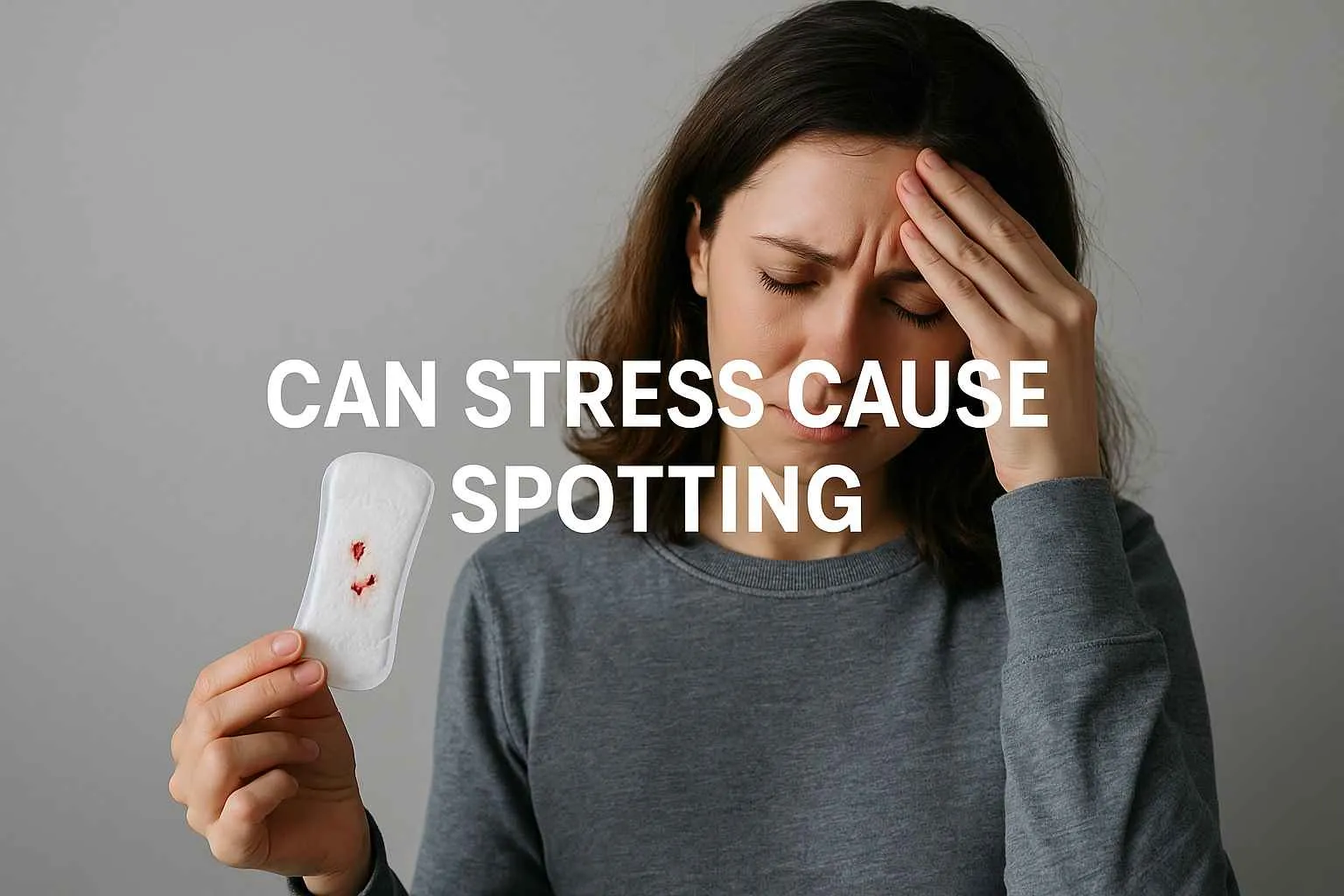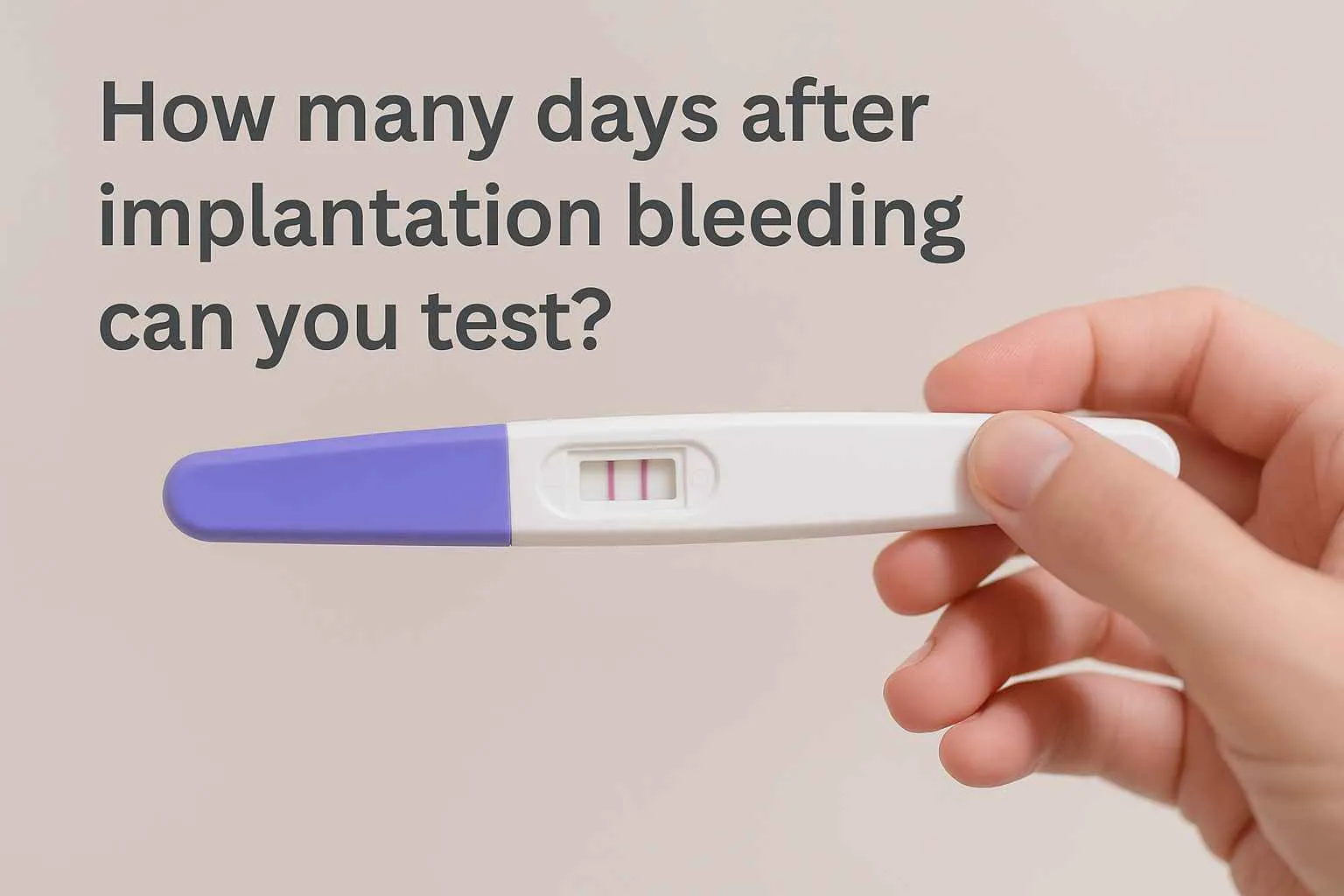Ovulation is an important part of a woman's menstrual cycle. During this period, mature eggs are released from the ovary, which, when fertilized by sperm, can lead to pregnancy. If you are planning a pregnancy, knowing exactly when ovulation occurs is crucial. However, once ovulation time is over, the possibility of conception significantly lowers, prompting many to look for signs ovulation is over.
This article will guide you through some potential signs ovulation is over. It will also provide an overview of the ovulation period, when it occurs, how to predict and track ovulation and answer many more related questions. Let's start!
8 Signs Ovulation Is Over
These potential signs, when ovulation is over, can help determine when your ovulation period has come to an end:
1. Changes in Cervical Mucus:
This is one of the common symptoms ovulation is over. As the ovulation period comes to an end, the cervical mucus tends to undergo some noticeable changes. Typically, it has a clear, stretchy, and sticky consistency that looks like raw egg white and after ovulation, it turns creamy and thick in texture. These changes can be a great indicator that your ovulation period comes to an end.
2. Lower Basal Body Temperature:
As you ovulate, the progesterone hormones flow through your body at a very high level which increases the normal Basal Body Temperature (BBT). When basal body temperature reaches its typical extreme height, it shows signs ovulation has already occurred. This shift in BBT will be approximately 0.5°F-1°F.
3. Reduction in Libido:
Our body functions mysteriously. It encourages the body to reproduce when women are 5 days near their ovulation period and even the day ovulation occurs. So, once the ovulation is over, your libido (desire for sexual activity) decreases. This shows your ovulation period has occurred already.
4. Decrease in Abdominal Discomfort:
Nearly 40% of women might feel mild discomfort in their abdominal area during ovulation. This discomfort is often described as a dull pain or cramp on one side of the lower part of the abdomen which is termed as "mittelschmerz". As per research, this pain lasts for a few minutes to hours and sometimes a day or two. But, a decrease in such discomfort shows your ovulation is over. Note that not every woman goes through this pain. This sign alone can't be sufficient to determine the end of the ovulation period.
5. Change in Cervix Position:
Your cervix position keeps changing during the menstrual cycle. Before the ovulation, it is higher and during the ovulation, it gets softer and more open for sperm penetration. But after you ovulate, it becomes firm, more closed, and lower in position, as per a study. This shows a sign of the end of the ovulation period.
6. Mood swings subside:
During ovulation, women's bodies go through hormonal fluctuations which cause mood swings. As the ovulation period is over, the hormonal changes subside and mood swings frequently become more stable.
7. Return to Constant Menstrual Cycle:
The ovulation period indicates a phase of increased fertility, and a chance to get pregnant. Once it gets over and pregnancy does not happen, your menstrual cycle starts. If a woman has an irregular menstrual cycle, returning to a much more constant period can be a hopeful sign that ovulation is over.
8. Breast becomes tender:
Tender or sore breasts are very common during the ovulation period. This happens due to the fluctuations of hormones such as progesterone and estrogen in the body. When ovulation ends, these symptoms disappear.
When Does Ovulation Occur?
Usually, ovulation happens in the middle of the woman's menstrual cycle which lasts for around 1 day. It typically occurs post the follicular phase (a phase when ovarian follicles ripen and one of the eggs inside them matures) and roughly 2 weeks before the menstruation begins. However, this process can differ from one woman to another and also from one month to another. Generally, ovulation occurs about 2 weeks before your period starts.
In some cases, ovulation can occur more than once a month, and in a few other cases, it doesn't happen at all even though the women have a period. This can make it challenging to track the ovulation period. But, recognizing the signs when ovulation starts or is over can help you plan or prevent pregnancy.
How Many Eggs Do You Lose Per Period?
Typically, you lose around 1,000 immature eggs per period. You usually ovulate 1 mature egg each month. This single mature egg makes it through the complete ovulation process. The ovarian follicle (that stores eggs) is activated, then, the egg grows and gets mature, and once it reaches full development, it detaches from the ovary and travels to the fallopian tubes. That's the ovulation phase.
But, there are plenty of eggs that do not mature in the first stage. In each menstrual cycle, nearly 15 to 20 follicles get activated and when the eggs inside them do not mature, they get reabsorbed or die. The number of deaths or reabsorption of immature eggs increases with age each month.
When is It Best to Have Sex During Ovulation?
During ovulation, women typically have a fertile window of 6 days. During this time, the chances of getting pregnant from unprotected sexual intercourse are very high. The woman is most fertile in the 4 days before ovulation, one day after ovulation, and about 24 hours after ovulation. The chances of fertilization of the released egg after the ovulation is for 12-24 hours. Sperms can stay in the reproductive tract for around 5 days. So, if you are planning to get pregnant, you can have unprotected sexual intercourse during these most fertile 6 days.
What Does Hyperovulation Feel Like?
The ovary typically releases one mature egg during the ovulation period of the menstrual cycle. Once released, it travels to the fallopian tubes for fertilization by sperm. But, sometimes more than one egg is released from the ovary during the same cycle. This condition is called hyperovulation. In this case, if both eggs get fertilized by sperm, it can lead to fraternal twins. The causes can be genetic, age, or an immature endocrine system. There are a few symptoms of hyperovulation that may be:
- a shift in basal body temperature
- pelvic pain or discomfort
- an increase in vaginal discharge
- tender chest or breast
What Happens If I Am Not Ovulating?
Many women will ovulate for at least one time during their menstrual cycle. However, anovulation is the case when you are not ovulating. Anovulation occurs when the ovary does not release an egg at the time of the menstrual cycle. This can also cause infertility issues. Ovulation, usually, can impact any woman with age between 12 to 51 years. And, the chances of anovulation are higher when:
- You just start having menstruation (period).
- You are in a phase of perimenopause.
- You have Polycystic Ovary Syndrome (PCOS)
- You are living with a low Body Mass Index (BMI) because of practicing exercises for the long-term and beyond limit or anorexia.
Can You Get Pregnant After Ovulation Is Over?
Even if the ovulation period is over, the released mature eggs from the ovary are still accessible for fertilization for about 12-24 hours. In addition, sperm can live in the reproductive tract of the woman for around 5 days. Hence, if you have unprotected sexual intercourse a few days before the ovulation period, on the same day of ovulation, or after a day of ovulation, there is still the probability of getting pregnant.
How to Predict and Track Ovulation?
If you are planning for pregnancy, you might find it important to track your ovulation period. For this, you need to mark down the following points:
- Menstruation (periods) dates
- Explanations of your period blood
- Explanations of your cervical mucus
- Your Basal Body Temperature (BBT) readings
- Notice physical changes like pain, tender breasts, bloating, or cramps.
- Other relevant factors like energy levels, mood, and sex desire.
You can make use of a calendar or diary to keep an eye on your ovulation period. There are several online printable templates to track your period. Moreover, there are ovulation predictor kits available online. You can get help from fertility monitors as well in which you can mark your morning body temperature readings. This benefits in knowing the rise in your basal body temperature after the ovulation period. The most reliable option is transvaginal ultrasound. Professionals can help estimate the proper time your ovulation occurs and ends by examining your ovaries.
Final Thoughts
Ovulation is part of the menstrual cycle, and pregnancy can occur for up to five days before ovulation and one day after ovulation. There are signs ovulation is over. Those may include changes in cervical mucus, a little increase in the basal body temperature, abdominal pain or cramps, tender breasts, and more. Ovulation predictor kits and fertility monitors can help predict and track ovulation. If you are not able to track your ovulation period, seek professional help.
Also Read: 5 Signs Of Ovulation To Help You Track Your Fertile Window
Frequently Asked Questions
Why do I always ovulate on the left side?
Some physiological differences control the growth of ovarian follicles and decide which ovary will ovulate per cycle. So, which side of the ovary will ovulate is determined by how lengthy your previous menstrual period was.
How do I know if I ovulated this month?
You can look for the most common sign which is an increase in the amount of thin, light, 'watery' cervical mucus. You can even keep an eye on your basal body temperature.
What are the 4 signs ovulation is over?
Low sex drive, tender breasts, shift in basal body temperature, change in cervical mucus, ovulation pain, change in cervical position, spotting, etc.
Can you feel the egg leaving the ovary?
Most women experience ovulation pain on the side of the ovary that is releasing an egg. This means if your right ovary is releasing an egg, you will experience pain on the right side.
What are the signs of egg release?
Low libido, ovulation pain, tender breasts, shift in basal body temperature, change in cervical mucus, change in cervical position, spotting, etc.
What are the signs ovulation is over-discharge?
As your ovulation period is near, you will notice your discharge is wet, slippery, and stretchy.
Reviewed by







